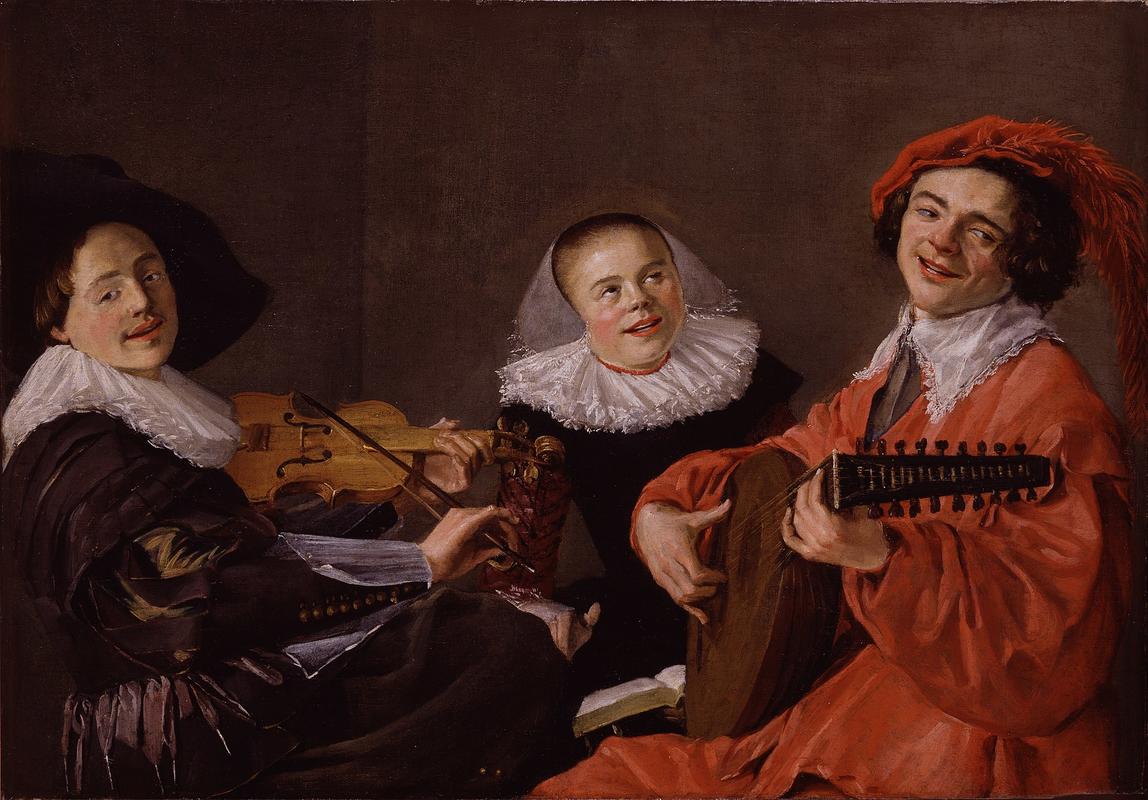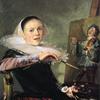More about The Concert

Sr. Contributor
Judith Leyster seems to have loved swinging – I mean singing – almost as much as she loved painting.
Especially when she’s singing along to two handsome men playing instruments on either side of her...if you know what I mean. Sure, this work isn’t nearly as unnerving as Picasso’s Three Musicians, but it does make you wonder about what exactly is going on among these three. All jokes aside though, these musicians are having a grand old time.
This scene of joyful singing wasn’t unique to the time, so I guess I shouldn’t read into it too much. When they weren’t enjoying cheese and wooden clogs, the Dutch loved scenes of people drinking, having fun, and playing music. The wealthy merchants who had enough coin to buy art wanted to identify with these salt-of-the-earth people taking pleasure in the simple things. They were nothing like those pretentious people over in France who liked art by Nicolas Poussin. All those Biblical stories and myths were a bore – bring on the bawdy, buzzed babes.
Unlike her male counterpart Frans Hals, who’s so much of a counterpart that she was confused with him for two centuries after her death, Leyster considered the role of women in her paintings. Being a woman, she had the unique perspective of actually thinking that women had a place in the world. What a concept! As such, the woman in the middle is having just as much, if not more, fun as the men are.
This is especially exciting when you realize that the woman in the middle is actually Leyster herself. That cap on her head and big Shakespeare-looking collar appear frequently in images that she painted of herself. In a rare moment of girl power, she is allowing herself to have some fun and is having fun showing it off. In a previous self-portrait showing the artist at work painting what could have been a self-portrait, Leyster actually painted over the smaller painting of herself, opting for an image of a man playing a violin instead. Of course, Leyster didn’t call this musical painting a self-portrait, so maybe that’s why she wasn’t afraid to let herself revel in the tunes.
But the fun doesn’t stop there. The male figures flanking her are also portraits. The man on the left playing the Baroque violin would later become her husband, and the man on her right playing the lute was a family friend. This work dates to about 1633, so she painted it just before she and her husband Jan Miense Molenaer married in 1636. If you ask me, her body language makes it seem like she’s more into the lute player.
Sources
- Davis, Penelope J.E., Frima Fox Hofrichter, Joseph Jacobs, Ann M. Roberts, and David L. Simon. Janson’s Basic History of Western Art. 8th edition. Upper Saddle River, NJ: Pearson Education, Inc., 2009.
- Lewis, Jo Ann. “Art,” The Washington Post. January 25, 1994. https://www.washingtonpost.com/archive/lifestyle/1994/01/25/art/8b0a905…. Accessed July 29, 2019.
- National Gallery of Art. “A Look at Judith Leyster.” Lessons & Activities. Education. https://www.nga.gov/education/teachers/lessons-activities/self-portrait…. Accessed July 29, 2019.
- National Museum of Women in the Arts. “The Concert.” Our Collection. https://nmwa.org/works/concert. Accessed July 29, 2019.
- Smithsonian Archives of American Art. “Oral history interview with Wilhelmina Holladay, 2005 Aug. 17-2005 Sept. 23.” Interviews. https://www.aaa.si.edu/collections/interviews/oral-history-interview-wi…. Accessed July 29, 2
- The Guerrilla Girls. The Guerrilla Girls’ Bedside Companion to the History of Western Art. New York: Penguin Books, 1998.











